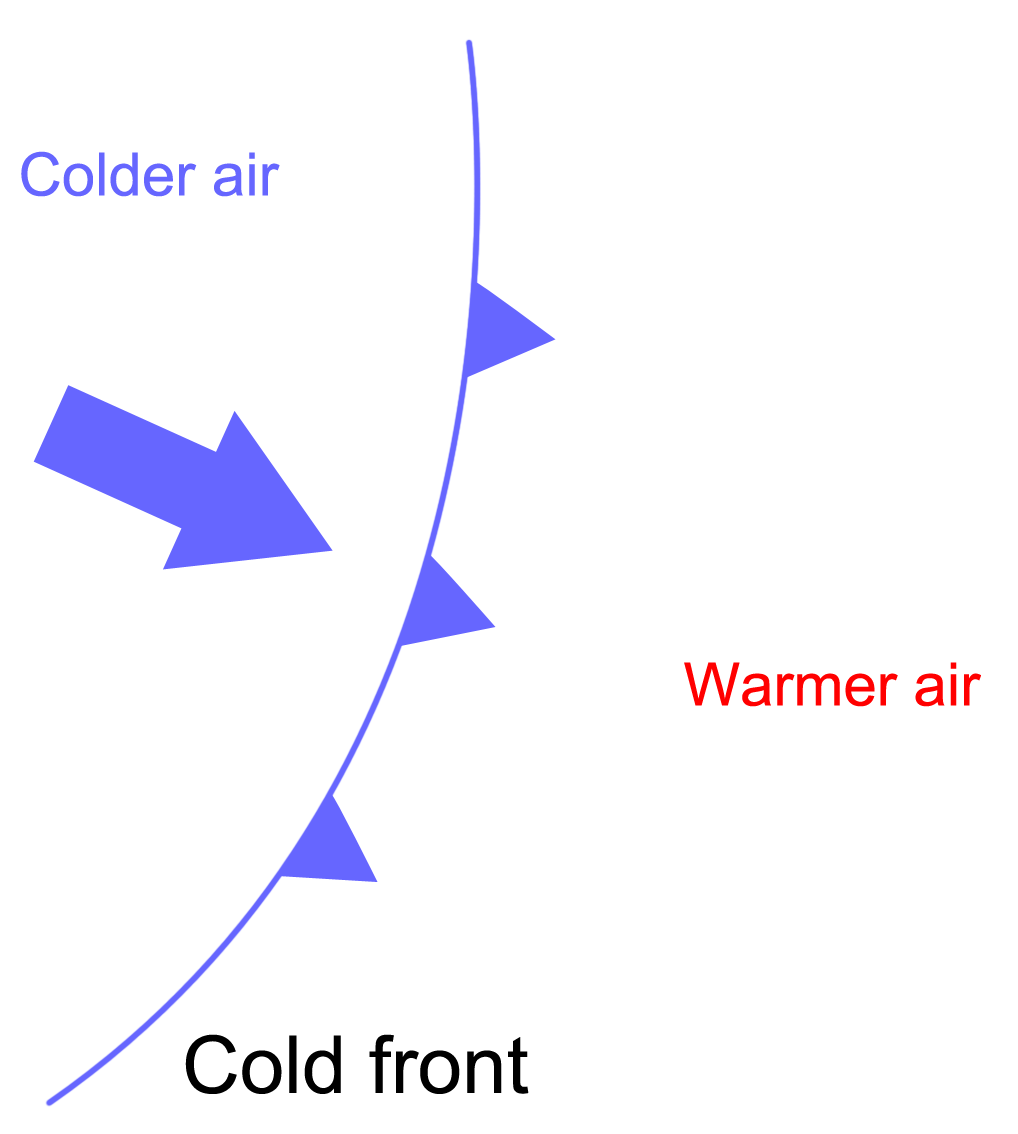What is a Cold Front?
A cold front occurs at the leading edge of a cold air mass that is moving to replace a warmer air mass.

Diagram showing a cold air front. The cold air mass is moving to replace the warmer air mass and at the boundary a cold front forms.
These different air masses do not mix because they have different temperatures and densities. As the cold front develops the warm air ahead of the front is pushed up over the top of the cold air. This happens because the warm air is lighter (less dense) than the cold air. You often see clouds forming at a cold front. This is because as the warm air rises, it cools and moisture in the air condenses. Clouds are masses of cool, condensed air.
Fronts can be several hundred kilometres in width. The air behind a cold front is cooler than the air in front of it. If a cold front passed overhead when you were standing outside, then you would feel the air cooling down. The air would also be dryer than before.
The weather maps below will help you understand how to recognise a cold front.
